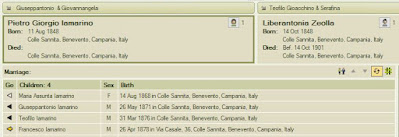Six months ago I wrote about my general approach to genealogy research. Let's look at the specific building blocks that can make anyone a productive and efficient family tree researcher.
I don't want to short-change any of these concepts, so this article is in two parts. You'll find a link to part 2 at the bottom of this article.
1. Spell Out Your Goals
Did you make your list of genealogy goals for 2018? I made a list that I look at anytime I feel like I'm searching for documents without a specific goal.
Sometimes it's fun to go off on research tangents. But it's far more rewarding to focus on a goal and make real progress. Your goals might be to:
- find a specific ancestor's parents
- clean up your source citations
- add details to every photograph and document image in your family tree
- prove a family story true or false
Come back to your goals again and again and whittle down the list.
2. Cast a Wide Net
I spent five years making trips to my local Family History Center. I ordered microfilm (it's available online now) from my maternal grandfather's hometown in Italy. I knew nothing beyond his parents' names, so I wanted to find out more.
I soon realized I couldn't tell who was related to me unless I pieced together all the families. So at the center I typed the data from each birth, marriage and death record. At home I entered it all into Family Tree Maker. In the end, I had a tree with 15,000 people. More than 10,000 of them had a connection to me.
 |
| Cast a wide net to capture all your ancestor's siblings and their children. |
If you don't want to go that far, at least gather all your ancestor's siblings. Say you find your 3rd great grandmother's birth record. Now you know your 4th great grandparents' names. Next you can search the surrounding years for babies born to the same couple.
Find those siblings and you can begin to identify your ancestor's close cousins. You're going to want those names when you're reviewing your DNA matches.
3. Take Advantage of Software
 |
| Here's a small piece of my priceless vital record collection. |
There are a lot of talented programmers out there creating free genealogy software. I finally gave up trying to write my own program when I found Family Tree Analyzer. This program takes the germ of an idea I was playing with and puts it on steroids. You can run reports, correct errors, and slice-and-dice your family tree in a bunch of ways.
And thank goodness I found GetLinks. Using GetLinks, I easily downloaded thousands and thousands of vital records from 7 of my ancestral hometowns in Italy. (Note: This downloading solution doesn't work anymore.)
Don't do things the hard way when other genealogy whizzes have created a solution for you.
Please continue to part 2 of this article. I get into the nuts and bolts of my genealogy philosophy with 3 more building blocks.












